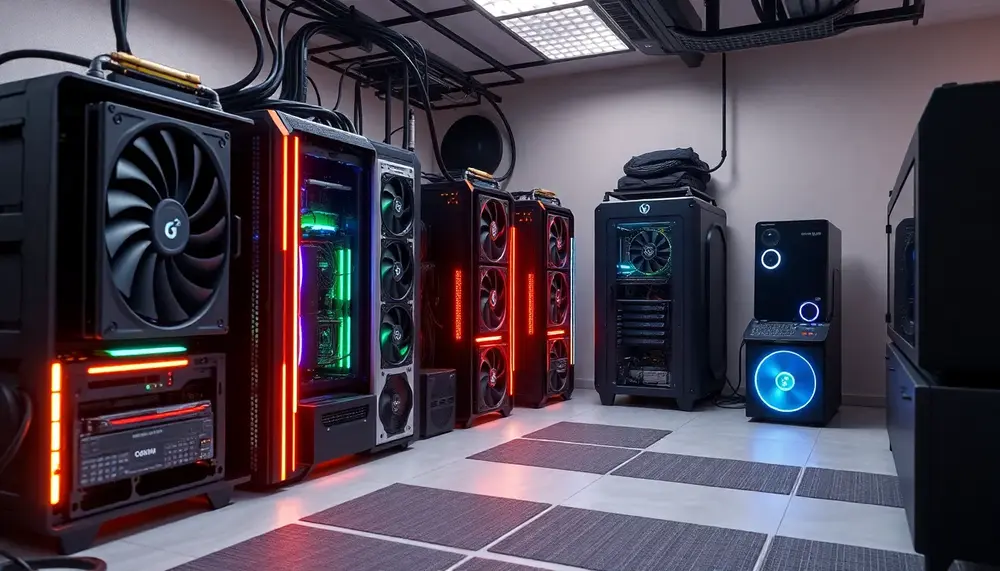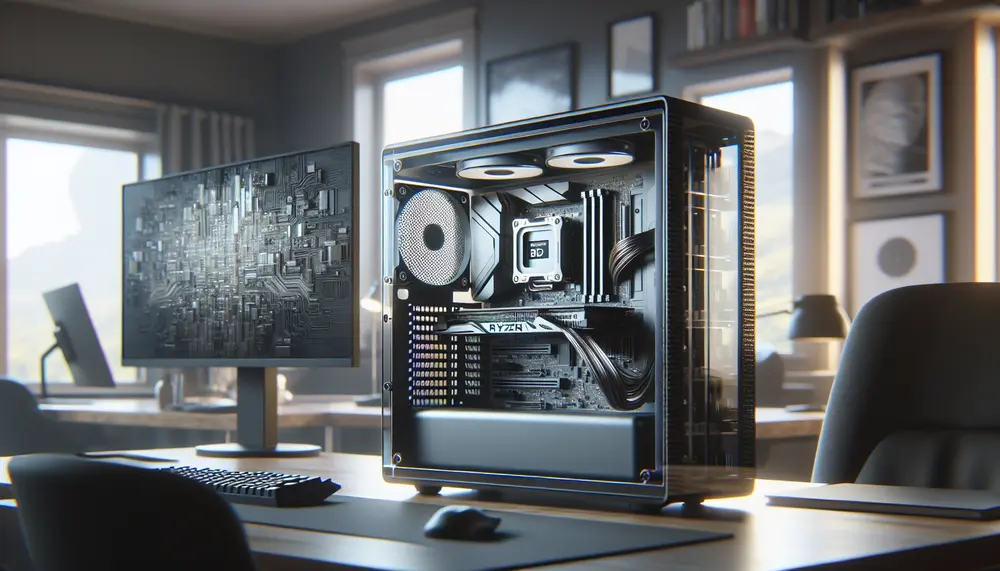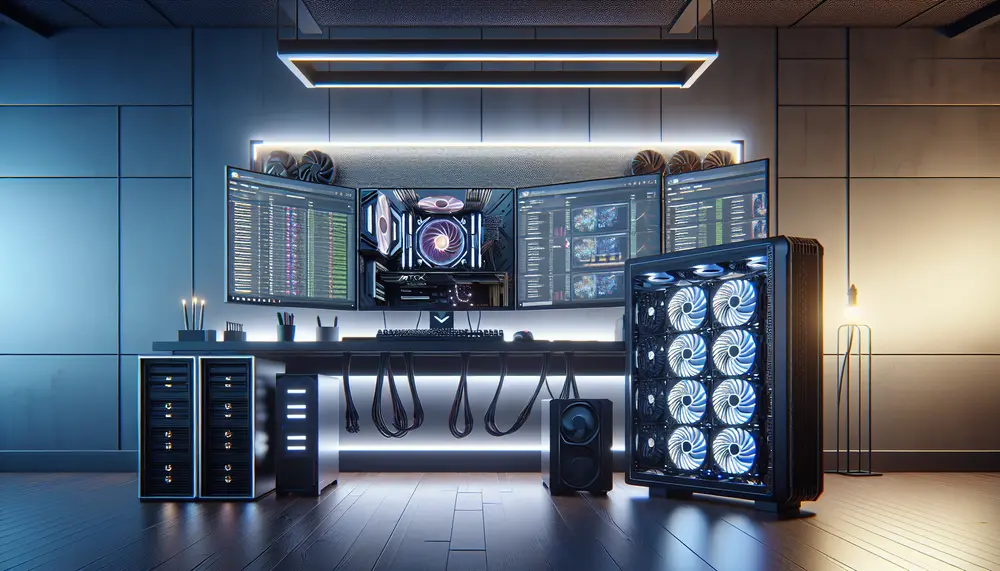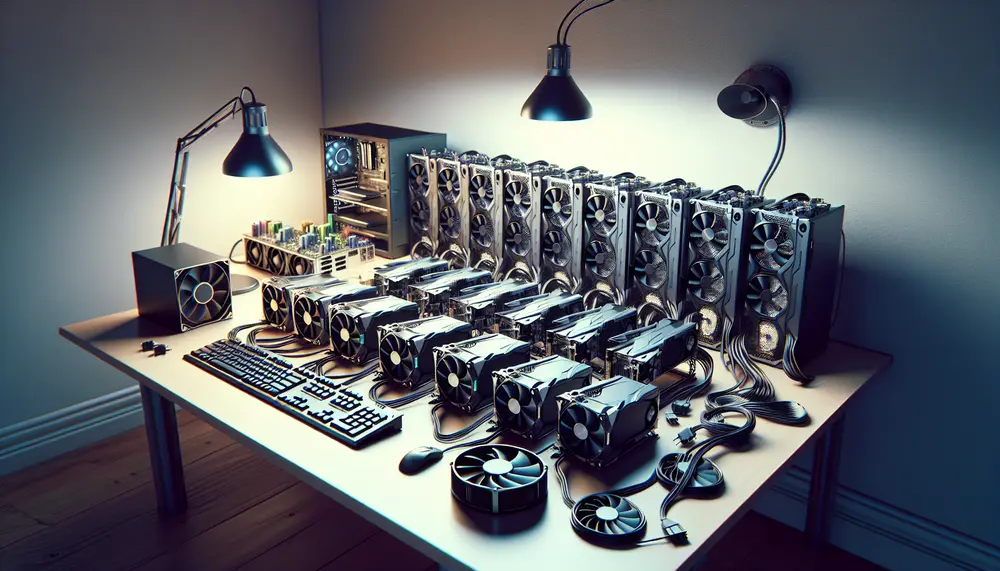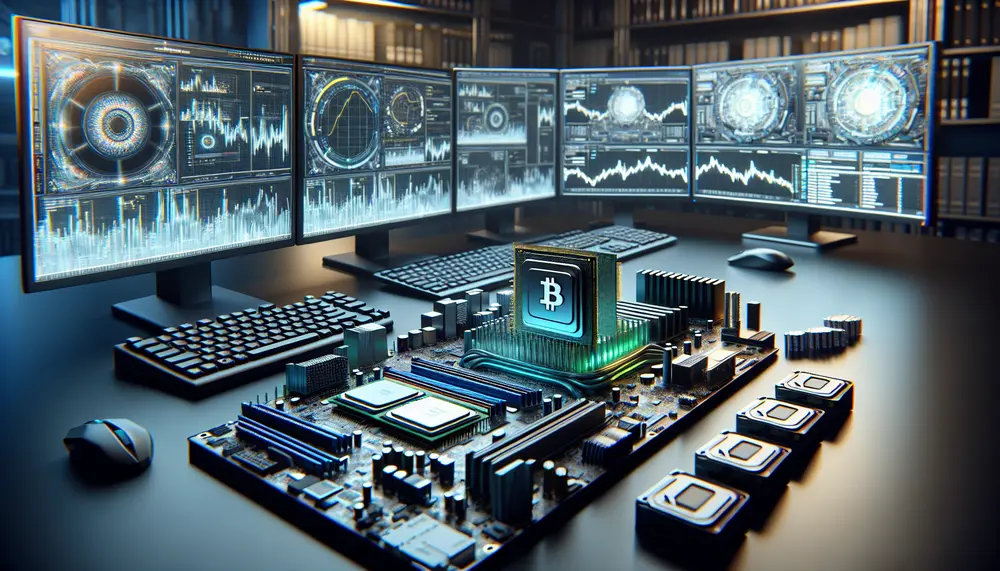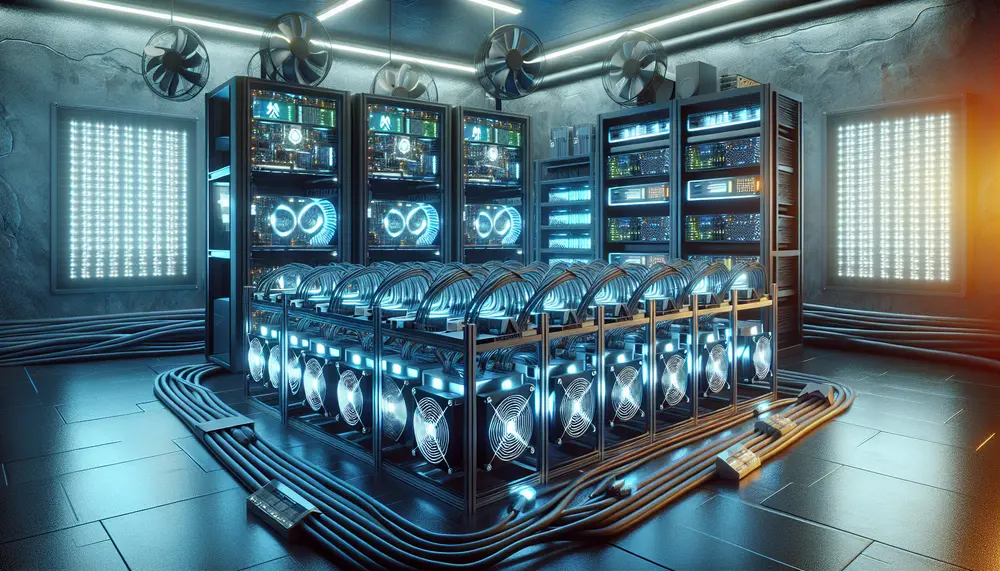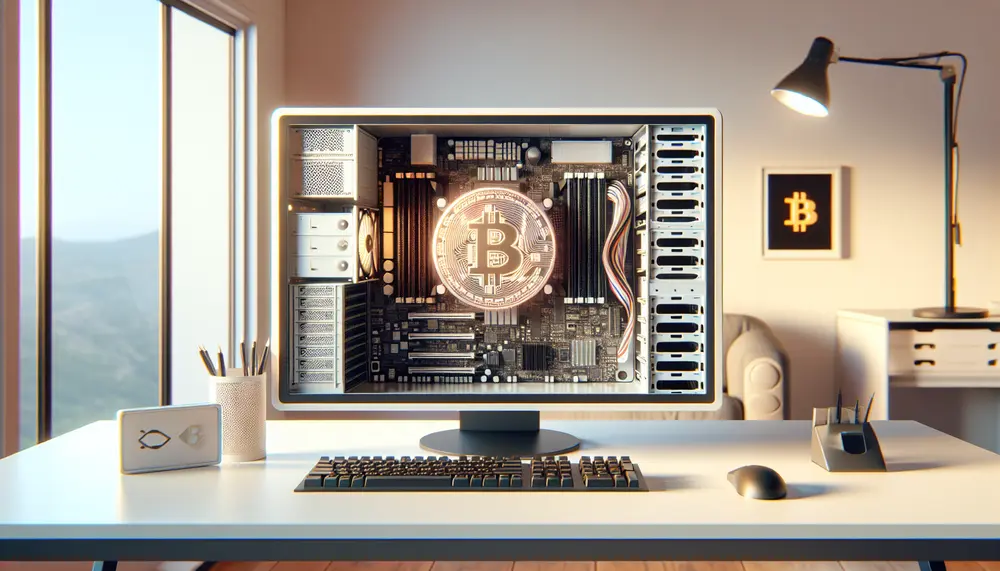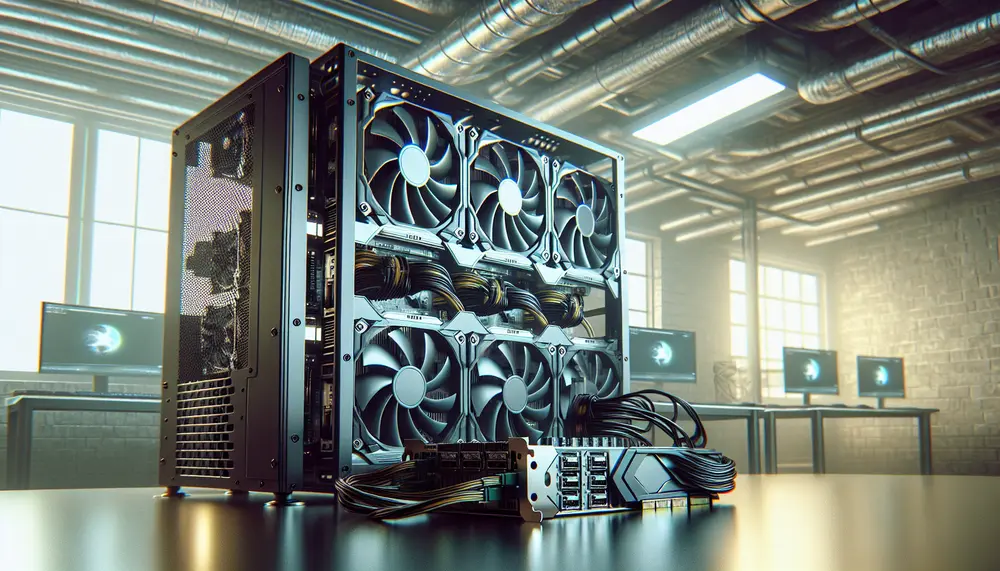Posts on the Topic Monero Mining

The article provides essential tips to boost Monero mining efficiency, focusing on factors like hardware selection, electricity usage, and software optimization. It emphasizes the importance of choosing the right CPU, optimizing power consumption, fine-tuning mining software, and keeping track of...

The article compares Bitcoin and Monero mining, highlighting their differences in blockchain transparency, supply limits, hardware requirements, energy consumption, and profitability factors. It explains that while Bitcoin requires specialized ASICs for mining and has a fixed supply with halving events...

Monero mining involves verifying transactions on the Monero blockchain using computational power to solve complex problems, with CPUs being more effective due to the RandomX algorithm. Costs include initial hardware investments, electricity, maintenance, software fees, and internet costs; miners can...

The article provides an overview of Monero mining, explaining the process, comparing solo and pool mining, discussing factors affecting profitability such as hashrate, electricity costs, hardware expenses, and recommending suitable hardware and software for effective mining. It concludes that understanding...

The article discusses the importance of choosing the right Monero mining OS to enhance efficiency and profitability, highlighting key features such as optimization for RandomX, pre-installed mining software, easy configuration, remote management, automatic updates, hardware optimization, stability and reliability. It...
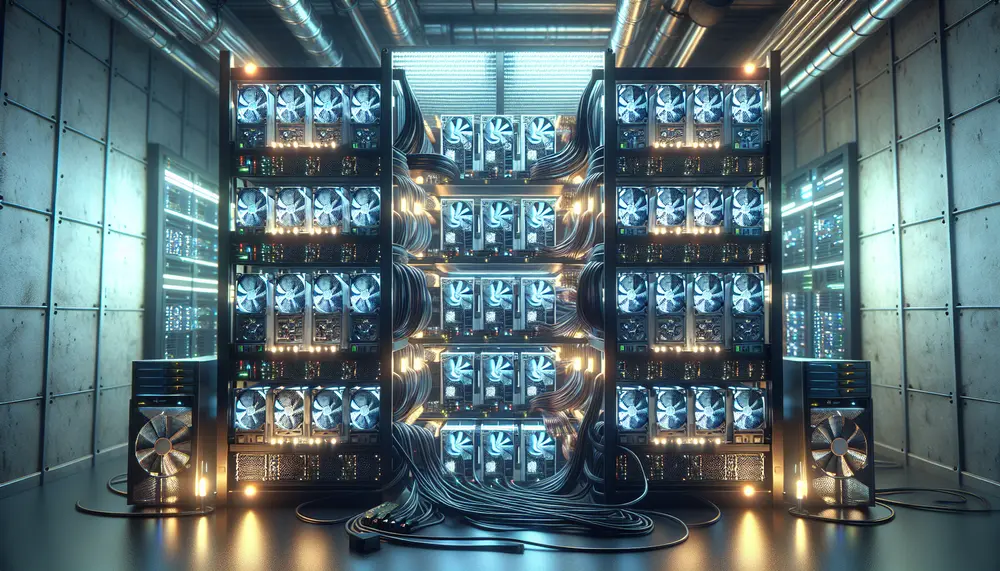
Monero is a privacy-focused cryptocurrency that uses the RandomX algorithm for ASIC-resistant CPU mining, requiring specialized software like XMRig, Cudo Miner, or CSminer to optimize efficiency and profitability. Each of these options offers unique features such as high performance, multi-currency...

The article provides a comprehensive guide on setting up Monero solo mining on a Linux system, detailing the necessary requirements, installation steps for Monero software, synchronization with the network, configuration of mining settings, and monitoring performance to ensure efficient operation....

Monero hashrate calculators help miners estimate potential earnings by considering factors like hardware hashrate, power consumption, pool fees, network difficulty, and block rewards. By accurately inputting these variables into a calculator, miners can determine if their setup is profitable or...

Monero mining requires understanding hashrate basics, choosing the right CPU-focused hardware due to its RandomX algorithm, optimizing software like Xmrig for performance, and continuously monitoring system metrics such as temperature and power consumption to ensure efficiency....

Monero mining requires understanding the minimum hardware and software requirements to avoid unnecessary expenses and maximize efficiency. Essential components include a modern multi-core CPU, at least 8GB of RAM, an SSD for storage, effective cooling solutions, and a reliable power...

Monero mining involves validating transactions using computational power, with miners rewarded through a combination of decreasing block rewards and transaction fees. The unique tail emission mechanism ensures perpetual miner incentives by stabilizing the reward at 0.6 XMR per block once...

Monero mining farms are specialized setups using multiple rigs to mine Monero (XMR) via the RandomX algorithm, which is CPU-focused and ASIC-resistant. Setting up such a farm involves selecting high-performance hardware, managing energy consumption, and understanding initial costs to maximize...

Monero mining with XMRig involves using your computer's processing power to solve mathematical problems that validate transactions on the Monero network, earning you Monero coins in return. This guide covers setting up a Monero wallet, choosing a mining pool, downloading...

The article explains the importance of understanding Monero mining pools and their hashrate distribution, highlighting how these factors affect network security and decentralization. It also provides a guide to selecting top Monero mining pools in 2024 based on criteria such...

This guide simplifies Monero solo mining with XMRig, covering setup and optimization to mine efficiently. It explains the benefits of using XMRig, necessary hardware requirements, and how to set up a Monero wallet for secure fund management....

Monero mining with a USB stick provides an easy and portable way to mine Monero (XMR) without complex setups, making it ideal for beginners. This guide covers the necessary tools, software, and steps to create a bootable USB stick for...

The article provides essential tips to boost Monero mining efficiency, focusing on factors like hardware selection, electricity usage, and software optimization. It emphasizes the importance of choosing the right CPU, optimizing power consumption, fine-tuning mining software, and keeping track of...

Solo mining Monero offers complete control, no pool fees, full rewards, and enhanced privacy but comes with high variability in payouts, requires technical knowledge, and demands powerful hardware. This guide helps you weigh these pros and cons to decide if...

Monero mining on AMD Ryzen CPUs is popular due to their high performance and efficiency; this article provides a guide for optimizing these processors, covering hardware selection, BIOS settings, and software configuration to maximize mining profitability. Key considerations include core...

Choosing the right CPU for Monero mining is crucial due to its RandomX algorithm, which favors consumer-grade CPUs over specialized hardware like ASICs. Key factors in selecting a CPU include core and thread count, clock speed, energy consumption, compatibility, price,...

The article provides a comprehensive guide on optimizing Monero mining using the Nvidia RTX 3060 GPU, highlighting its performance, energy efficiency, and cost-effectiveness. It covers essential steps such as setting up a wallet, joining a mining pool, configuring software, and...

The article explains Monero mining, focusing on optimizing CPU performance to maximize hashrate. It covers key factors like core count, clock speed, cache size, and thermal management while providing practical tips for overclocking, adjusting power settings, improving cooling solutions, using...

The article discusses Monero mining, emphasizing its focus on privacy and decentralization through the RandomX algorithm that favors CPUs and GPUs. It provides a guide to selecting optimal GPUs for mining by considering factors like hash rate, power consumption, price-to-performance...

The article compares solo and pool mining for Monero, detailing their respective advantages and disadvantages. Solo mining offers full block rewards but is resource-intensive with inconsistent payouts, while pool mining provides more consistent earnings by combining computational power at the...

The article compares Bitcoin and Monero mining, highlighting their differences in blockchain transparency, supply limits, hardware requirements, energy consumption, and profitability factors. It explains that while Bitcoin requires specialized ASICs for mining and has a fixed supply with halving events...

Monero mining scripts automate the process of mining Monero (XMR), making it accessible and efficient for both beginners and experienced miners by optimizing hardware use. This guide covers everything from understanding Monero's RandomX algorithm to choosing the right hardware, software,...

The article provides a comprehensive guide on how to mine Monero using Nanopool, covering the setup of a Monero wallet, creating an account on Nanopool, and configuring mining software like XMRig. It emphasizes Monero's privacy features and decentralized nature while...

Monero mining with Intel i7 processors is efficient due to the RandomX algorithm optimized for CPUs, and this guide covers choosing the right model, setup steps, and optimization techniques. Key benefits include increased hashrate, improved energy efficiency, extended hardware lifespan,...

Monero mining, favored for its privacy features and CPU-friendly RandomX algorithm, can be optimized by selecting the right hardware (focusing on core count, cache size, memory bandwidth), configuring your setup with proper cooling solutions and BIOS settings, and using efficient...

Monero is a privacy-focused cryptocurrency, and mining it can be profitable using NiceHash, which simplifies the process by allowing users to rent hashing power instead of setting up complex hardware. This guide covers everything from creating a NiceHash account to...

Monero mining on a laptop is feasible due to its RandomX algorithm, which favors CPU over specialized hardware; however, it comes with risks such as overheating and increased wear and tear. To mine efficiently, ensure your laptop meets the necessary...

Monero mining involves verifying transactions on the Monero blockchain using computational power to solve complex problems, with CPUs being more effective due to the RandomX algorithm. Costs include initial hardware investments, electricity, maintenance, software fees, and internet costs; miners can...

This guide provides step-by-step instructions for setting up and optimizing a Linux system, particularly Ubuntu, for Monero mining. It covers the importance of privacy-focused cryptocurrency Monero, how to set up a secure wallet, prepare your system by installing necessary packages...

Monero mining on a Mac involves using your computer's processing power to earn Monero coins, and this guide provides step-by-step instructions for setting up the necessary software and optimizing performance. Mining Monero offers advantages such as privacy, accessibility with consumer-grade...

Monero is a privacy-focused cryptocurrency that can be mined using various methods, including JavaScript in web browsers, which offers accessibility and ease of use without requiring specialized hardware. This guide explains how to set up your environment for Monero mining...

Setting up a Monero mining server involves understanding the basics of Monero and its RandomX algorithm, choosing between solo or pool mining, selecting appropriate hardware like high-performance CPUs and sufficient RAM, and configuring necessary software such as a Monero wallet....

Monero mining, which emphasizes privacy and decentralization, relies on the RandomX algorithm optimized for CPU mining. This article discusses various Monero mining equipment options like CPUs and GPUs, their pros and cons, as well as strategies such as solo versus...

The article provides an overview of Monero mining, explaining the process, comparing solo and pool mining, discussing factors affecting profitability such as hashrate, electricity costs, hardware expenses, and recommending suitable hardware and software for effective mining. It concludes that understanding...

The article explores the feasibility of mining Monero with an Intel i5 processor, detailing its performance metrics, setup process, and potential profitability. It concludes that while Intel i5 CPUs offer a balance between cost and power consumption, careful consideration of...

The article discusses the importance of choosing the right Monero mining OS to enhance efficiency and profitability, highlighting key features such as optimization for RandomX, pre-installed mining software, easy configuration, remote management, automatic updates, hardware optimization, stability and reliability. It...

Monero is a privacy-focused cryptocurrency that uses the RandomX algorithm for ASIC-resistant CPU mining, requiring specialized software like XMRig, Cudo Miner, or CSminer to optimize efficiency and profitability. Each of these options offers unique features such as high performance, multi-currency...

The article provides a comprehensive guide on setting up Monero solo mining on a Linux system, detailing the necessary requirements, installation steps for Monero software, synchronization with the network, configuration of mining settings, and monitoring performance to ensure efficient operation....

Monero mining benchmarks are crucial for optimizing mining operations by providing insights into hardware and software performance, helping miners maximize hash rate and profitability. Key metrics such as hash rate, power consumption, efficiency, temperature, and latency guide the selection of...

Monero mining with CPUs is accessible and cost-effective due to the RandomX algorithm, which optimizes CPU performance over GPUs; top processors include AMD Ryzen 9 3950X and Intel Core i9-10900K. Benchmarking involves measuring hash rates and power consumption using software...

Monero is a privacy-focused cryptocurrency that can be mined using your computer's CPU or GPU without specialized hardware. To start mining, download and install the Monero GUI Wallet from getmonero.org, set it up in Advanced mode, configure the number of...
Top 10 posts in the category
Unsere Beiträge zum Thema Monero Mining
Delve into the world of Monero mining and its unique advantages in the cryptocurrency space. Monero employs a proof-of-work algorithm known as RandomX, designed to be ASIC-resistant. This ensures that Monero mining remains accessible to individual miners using regular CPUs.
Monero mining is renowned for its focus on privacy and security. Transactions are confidential and untraceable, making it a preferred choice for privacy-conscious users. Learn how Monero mining can provide both security and profitability.
To get started with Monero mining, you'll need to set up a Monero wallet and mining software. Wallets like MyMonero and GUI Wallet are popular choices among the Monero community. Understand the setup process to begin your Monero mining journey.
Joining a mining pool can significantly enhance your Monero mining efficiency. Pooling resources with other miners increases your chances of earning regular rewards. Research various mining pools to find the one that suits your Monero mining strategy best.
Stay updated with the latest developments in the Monero ecosystem to optimize your Monero mining operations. Keeping abreast of updates and improvements can help you stay competitive. Leverage the most recent advancements in Monero mining to maximize your returns.
Consider the long-term potential of Monero mining as part of your investment strategy. Monero's commitment to privacy and decentralization makes it a promising option for future growth. Make informed decisions to benefit from the opportunities in Monero mining.

